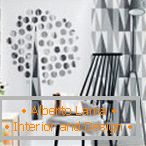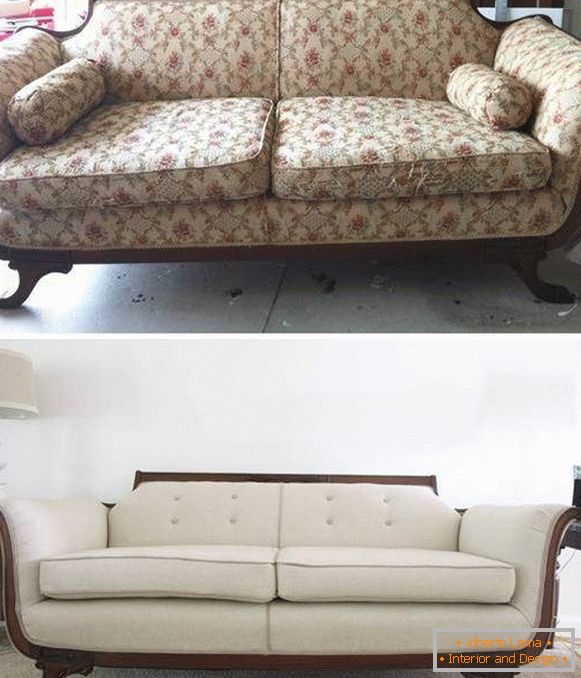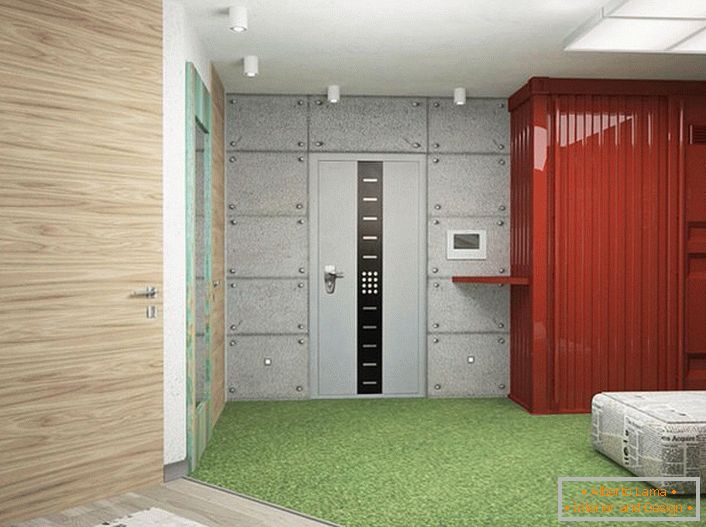
Glass blocks are obtained from two glass plates by pressing. This extraordinary material appeared in the USA for the first time. Glass blocks of the 30s were not very similar to modern ones, since they were a metal frame, the voids of which were filled with glass. It had its own "secret" - a sealed cavity between the plates or a "prism" helped disperse the light. Due to this, glass blocks were widely used in basements instead of windows. During the day, enough light came into the room to save on electricity.
Everyone remembers these fragments with roughly processed edges of green, "bottle" color, which let in a lot of light, but did not allow to see what was happening on the other side. After the collapse of the Union, the material was forgotten for a long time. It really associates with the Soviet standards and brings nostalgia, but now the glass blocks have opened from a completely different angle, as a progressive and most important aesthetically attractive variant of decoration. Let's talk in the article about which rooms can be decorated with this material and how to do it correctly.
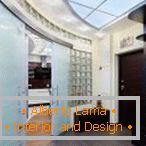
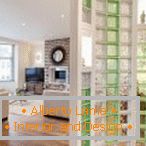

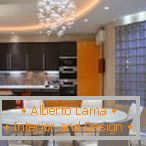
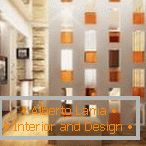
About glass blocks - classification
Glass blocks - a modern building material, which has a sealed cavity between two glass plates. By strength it is not inferior to stone and is often used in those rooms where it is impossible to install a window opening, but it is necessary to open access for natural lighting. Glass blocks are not afraid of water or household chemicals, so they often decorate the bathrooms. Also, the material has a high heat and sound insulation (the second characteristic is even higher than that of a brick), which makes it even more in demand. There are several classifications of glass blocks.
Depending on the shape of the fragments, they are divided into the following types:
- Corner.
- Brick.
- Square (the most common option).
- Half.
- Hexagonal.
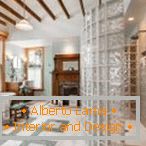
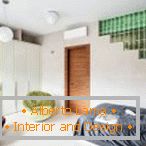
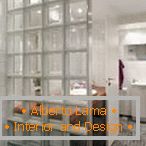
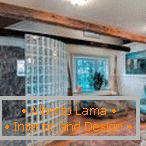
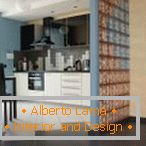
By the type of coloring the material is divided into two types:
- In the first case, the pigment is added to the glass itself. The color turns out to be a little pale, but very resistant.
- In the second variant, the surface of the glass is stained from the inside before the fragments are connected to each other.
Depending on the coloring material is classified into several types:
- Colored. Fragments are colored with pigments.
- Matt. Transparency is below average, while silhouettes on the other side of the glass block are indistinguishable.
- Colorless. Their transparency can reach 80-90%. Fragments let in a large amount of light. This type is divided into several subgroups: with herbaria, butterflies and starfish inside; smooth, with a relief surface (wave, drop) and scattering.
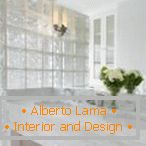
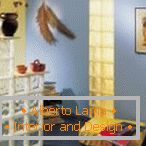

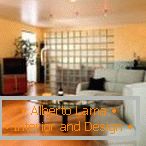
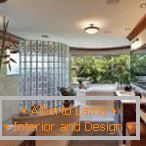
For the intended purpose glass blocks can be:
| Interior Decorations | Used exclusively for finishing houses inside when erecting partitions or installing inserts. |
| Decorative | Decorate the decoration of the house with original installations of fragments. Usually they have different sizes, beautiful internal filling (dried flowers, original compositions) or they form a complex pattern that is collected in a mosaic method. |
| Industrial | Their use is due solely to light transmission capacity. They are used in various non-residential facilities. |

Also the material is classified according to the country of manufacture. The leaders in the production of high-quality glass blocks were Italy and Germany. Budget options are produced in Poland and the Czech Republic. The last Russian plant manufacturing glass blocks closed a few years ago, which caused a discord between the increased demand and the declining supply and forced the purchase of materials in other countries.

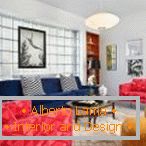
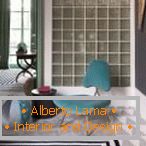
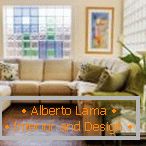
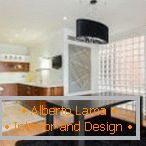
Advantages of interior design
Glass blocks have a lot of advantages, among the advantages of the material are noted:
- Fire and frost resistance.
- High light transmittance.
- Super strength.
- High soundproof characteristics.
- Easy to clean and no need for additional finishing.

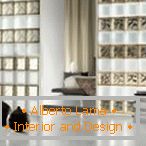
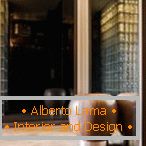
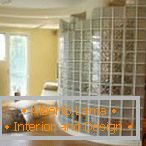

Unfortunately, glass blocks also have a number of not so significant drawbacks. In such a "wall" you can not drive a nail or drill a hole. It will not be possible to cut the fragments during laying, and in cases where the window is made only of glass blocks, the room can not be ventilated without using the door. High-pressure material does not stand.
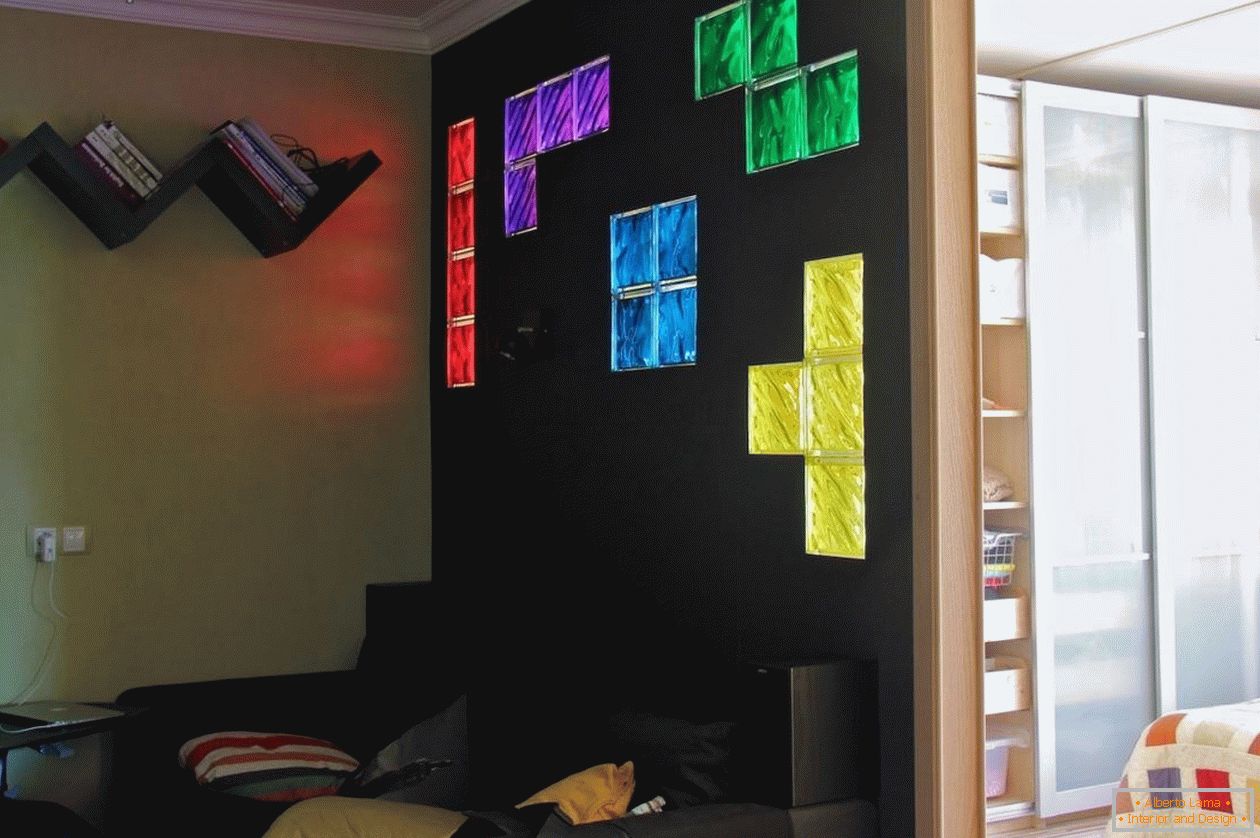
Glass walls can participate in the zoning of rooms deprived of light. Also, this material is popular for finishing domestic greenhouses and conservatories, as it provides a favorable environment for growing plants.
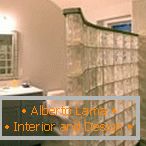

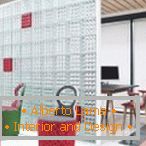


Stylistic compatibility
As for compatibility with different styles, glass blocks can be attributed to universal materials with little reservations. Already too firmly settled in the soul of the domestic man association with the state "bottle" walls. Blocks are organically poured into the following areas:
- Minimalism, constructivism and its later version - high-tech.
- Art Deco. To its luxurious interiors only monochrome glass blocks, which do not have pictures or fragments of flowers, butterflies, fit in the prism.
- Loft and modern. For the first, a wall of rectangular glass blocks will replace the traditional brickwork. In modernity, fragments with surfaces "wave" or "drop" look good, emphasizing the features of the concept of direction.
- A group of classical styles with prefixes "neo-" (baroque, classicism, rococo). Such interiors are largely subject to traditional rules, but at the same time they allow the use of modern materials, which include glass blocks.
- Eastern directions. If the fragments will have bright shades (predominantly blue or violet), then the mosaic way of laying will organically enter the intricate interiors of the countries of the East.

If you choose the right shape, color and type of surface, then the glass block can be integrated into almost any style.





Glass blocks and interior
Glass blocks are used to decorate any premises, due to their versatility and insensitivity to the peculiarities of the atmosphere. By characteristics, they are much like tiles, but ceramic tiles are traditionally tied to the kitchen and bathroom, but in the living room, bedroom or hallway, the original design will help create glass blocks.



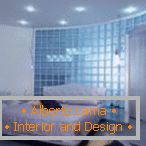
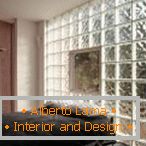

Kitchen
In kitchens from glass blocks spread aprons or generally replace them with tiles on the walls. In small and poorly lit rooms, the material can partially fill the window opening, leaving a small space under the usual opening glass for ventilation. The mosaic combination of several bright colors will look original. In spacious kitchens of glass blocks spread a full partition, which will divide the room into the culinary and dining areas.




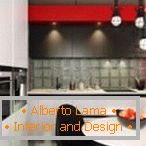
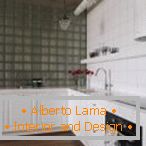
Living room
In the living room from the glass blocks most often perform decorative partitions. With their help, the room is divided into several areas for a quiet and active holiday. Actual option when combining a bedroom, dining room or office with a hall. If it is a private house, it will look great "panoramic windows" from the ceiling and to the floor on the accent wall, made entirely of glass blocks. In strict interiors it is recommended not to experiment with color combinations, but to try combinations of textures of different fragments of one shade. Effectively look the walls of the glass blocks with illumination. If you trim the room with transparent fragments with a relief surface, then they can be painted in any color with the help of chisel lamps, and the light will unusually play on the broken edges, creating bizarre patterns.
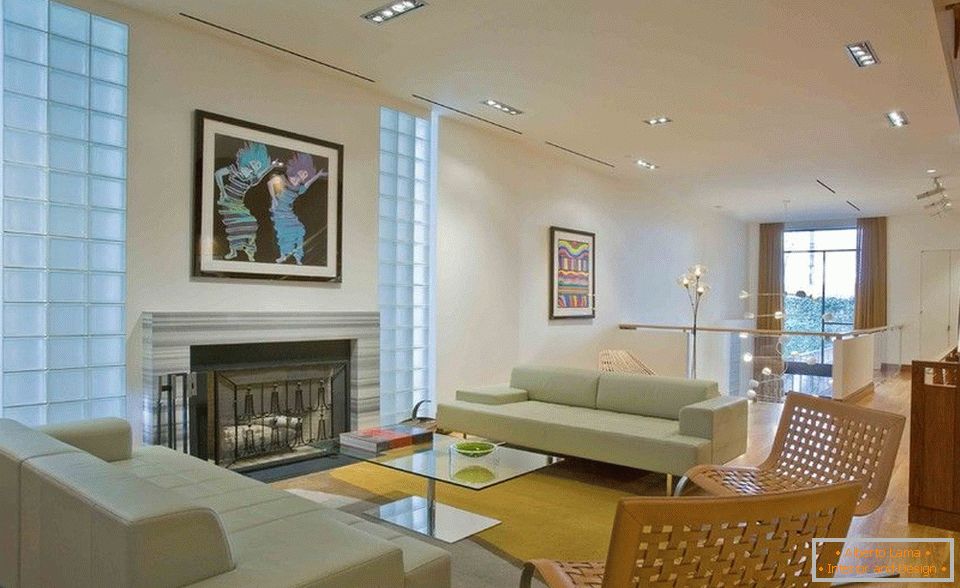
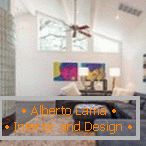
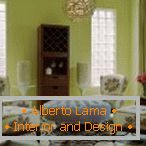
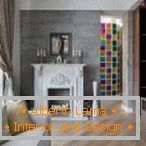
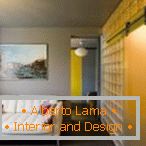

Bedroom
In the bedroom, glass blocks are used to produce soft, relaxing light. Behind them, you can place special lamps, or draw from this material a partition with a neighboring living room, where the household will "sit" in the evenings. Due to high sound insulation, noisy companies absolutely will not prevent falling asleep. Glass blocks decorate the accent wall at the head of the bed. In this case, it is desirable to use modules, painted in calm tones.
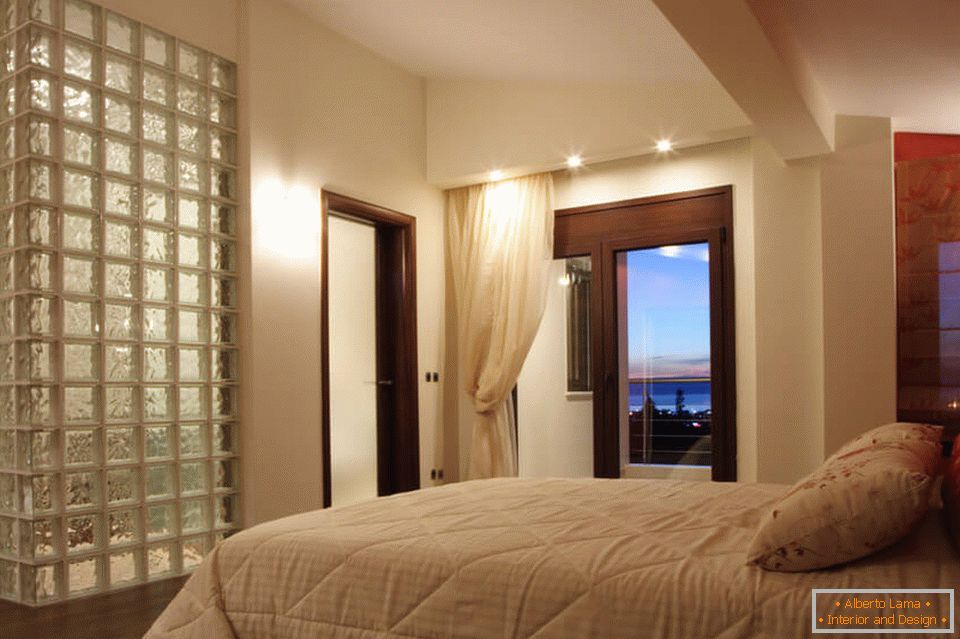
The use of single transparent fragments as inserts on the partitions looks original.
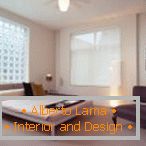
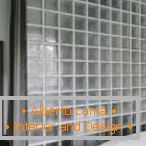
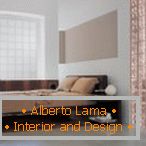
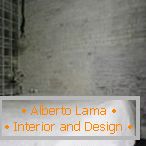
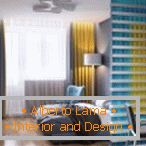
Bathrooms
In the bathroom, glass blocks were never used, because they seemed to have been created for such a "wet" room. With the help of this material the shower is beautifully fenced off from the rest of the room. As a room with a deficit of natural light, the bathroom is effectively decorated with glass blocks instead of window openings. The material passes more light and at the same time reliably disguises what is happening inside from curious looks from the street.
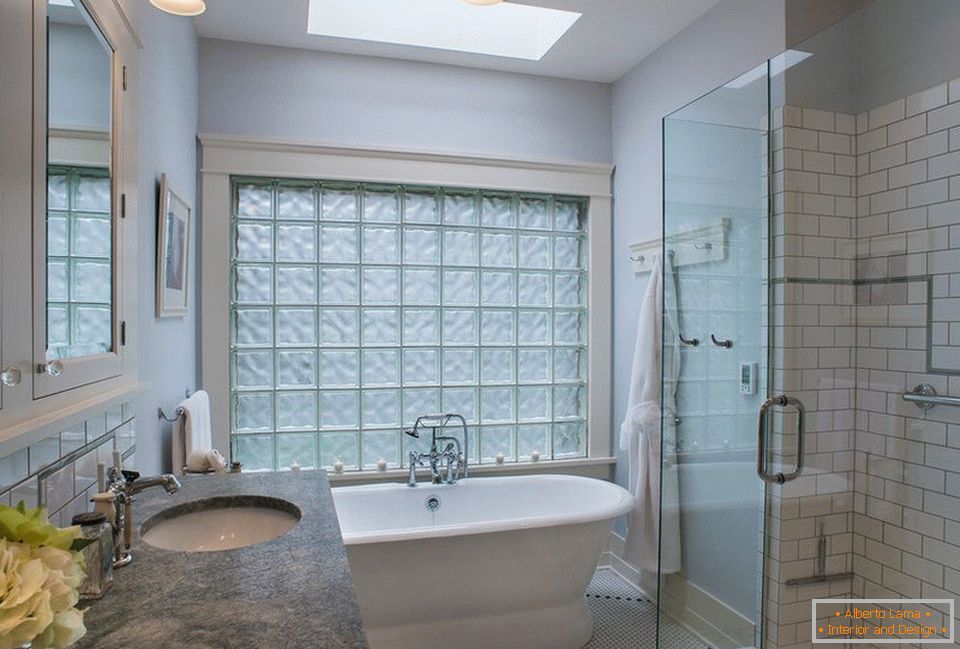
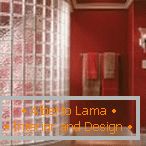
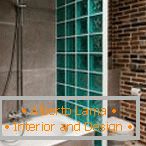


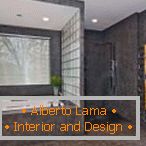
Windows in rooms of different purposes
Glass blocks are considered an original replacement for traditional windows. Unfortunately, this material is fundamental, therefore in most cases it will be necessary to air a room in other ways. Much less often, glass blocks are placed inside a special frame frame, which is fixed with the help of loops. The design should be strong and reliable, therefore its installation can take a long time. This window will be opened if necessary.
Читайте также: Decorative панели ПВХ 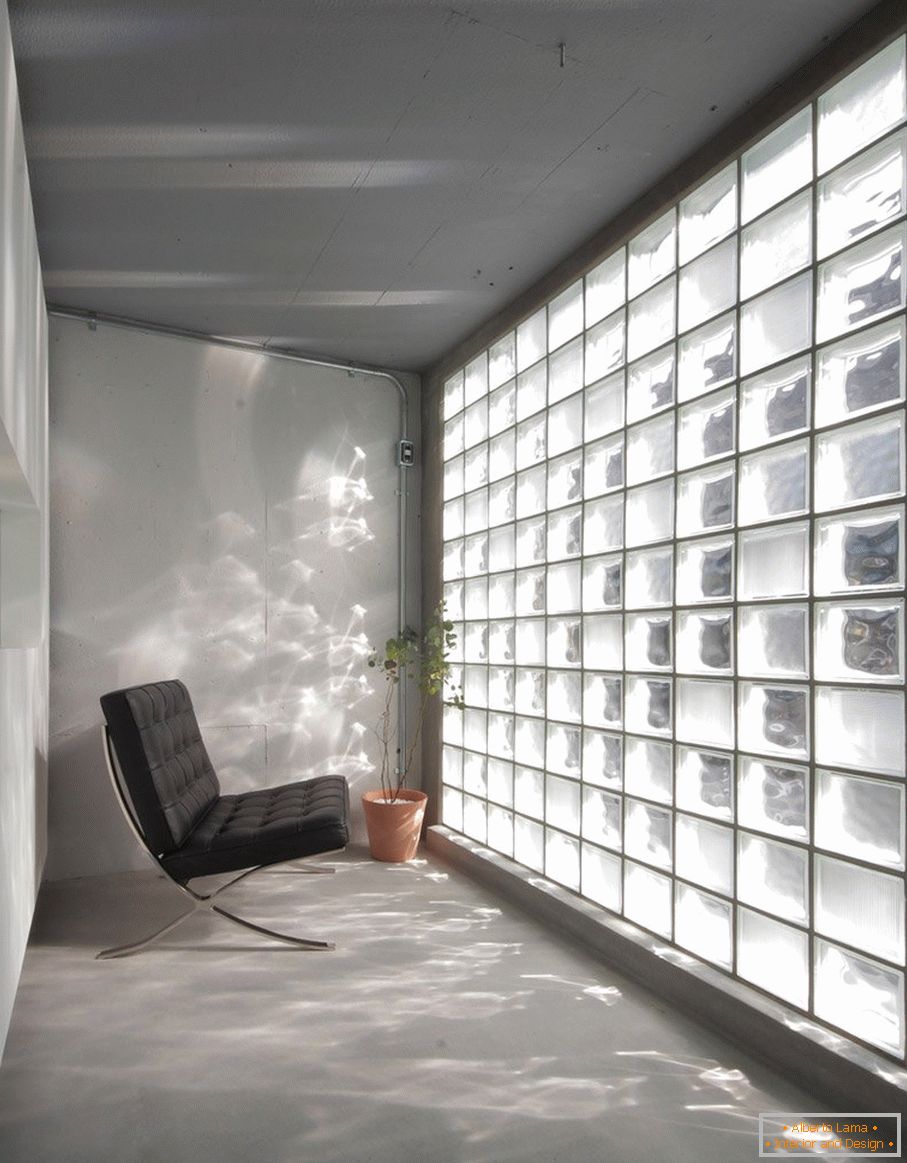
To exclude the use of curtains, you should choose fragments with a relief surface that distorts the reflection and disguises the interior for those who are outside. The optimal option is the combination of conventional windows with glass blocks in one room. In the bathroom, such openings are simply irreplaceable.
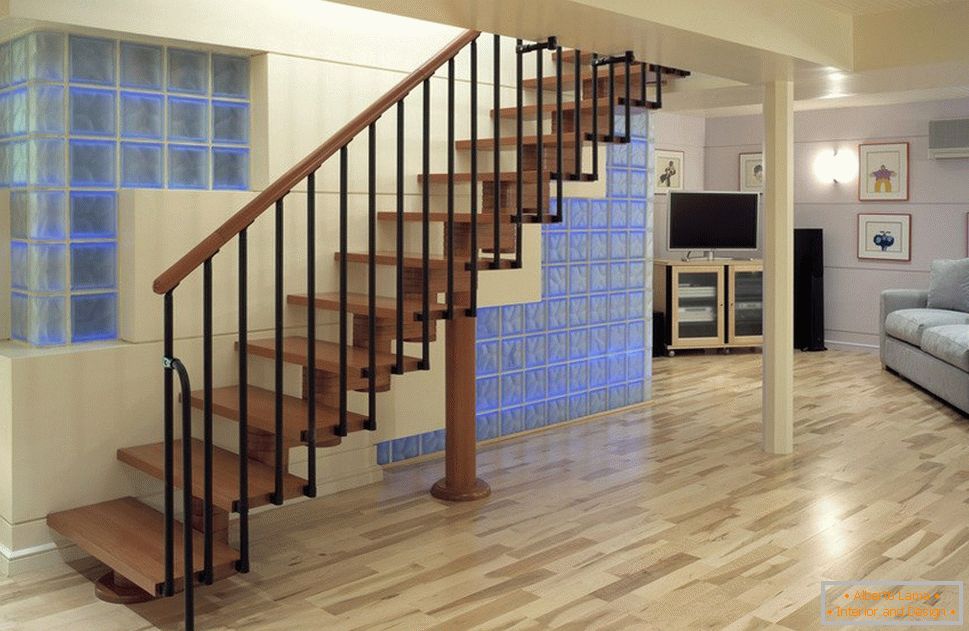
Original solutions in a modern interior
The material is universal. It is necessary to look at it from the creative point of view, that is to perceive as a set of "bricks", which in the manner of "tetris" can be laid in different ways. From glass blocks not only partitions or inserts are performed. This unique material will create a chic bar in the kitchen or in the living room. It can be colored or imitate an "ice block" if an element of colorless fragments is provided with the correct illumination. Also, glass blocks are used to decorate stairs instead of traditional balusters with handrails.
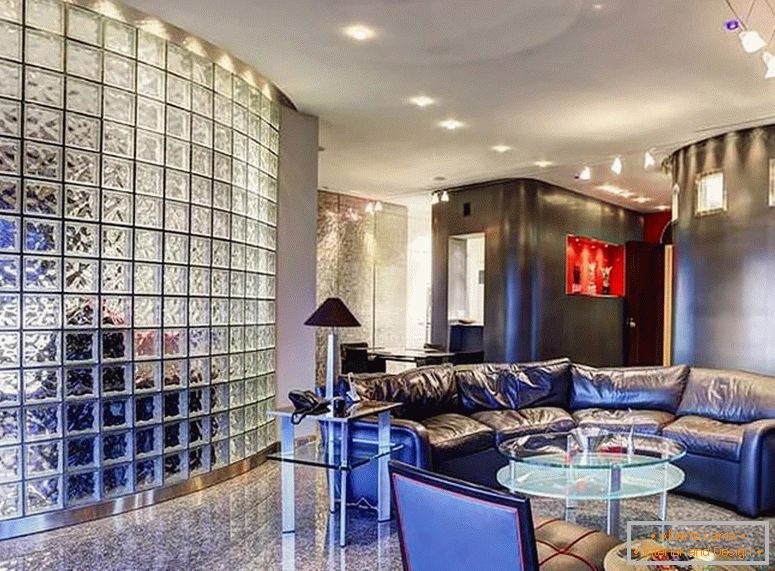
Not only the walls, but also the floor, and sometimes even part of the ceiling, are made of the material. In the second case, the area will have natural light, but in the first one it's better to install a special lighting system. A translucent floor covering will add perspective to a room with low ceilings. From glass blocks with original filling tables are made, where the material is made of "legs", and the top is fixed on top. Fragments can be laid like bricks, and create a magnificent open rack with stylish glass shelves between the pillars.
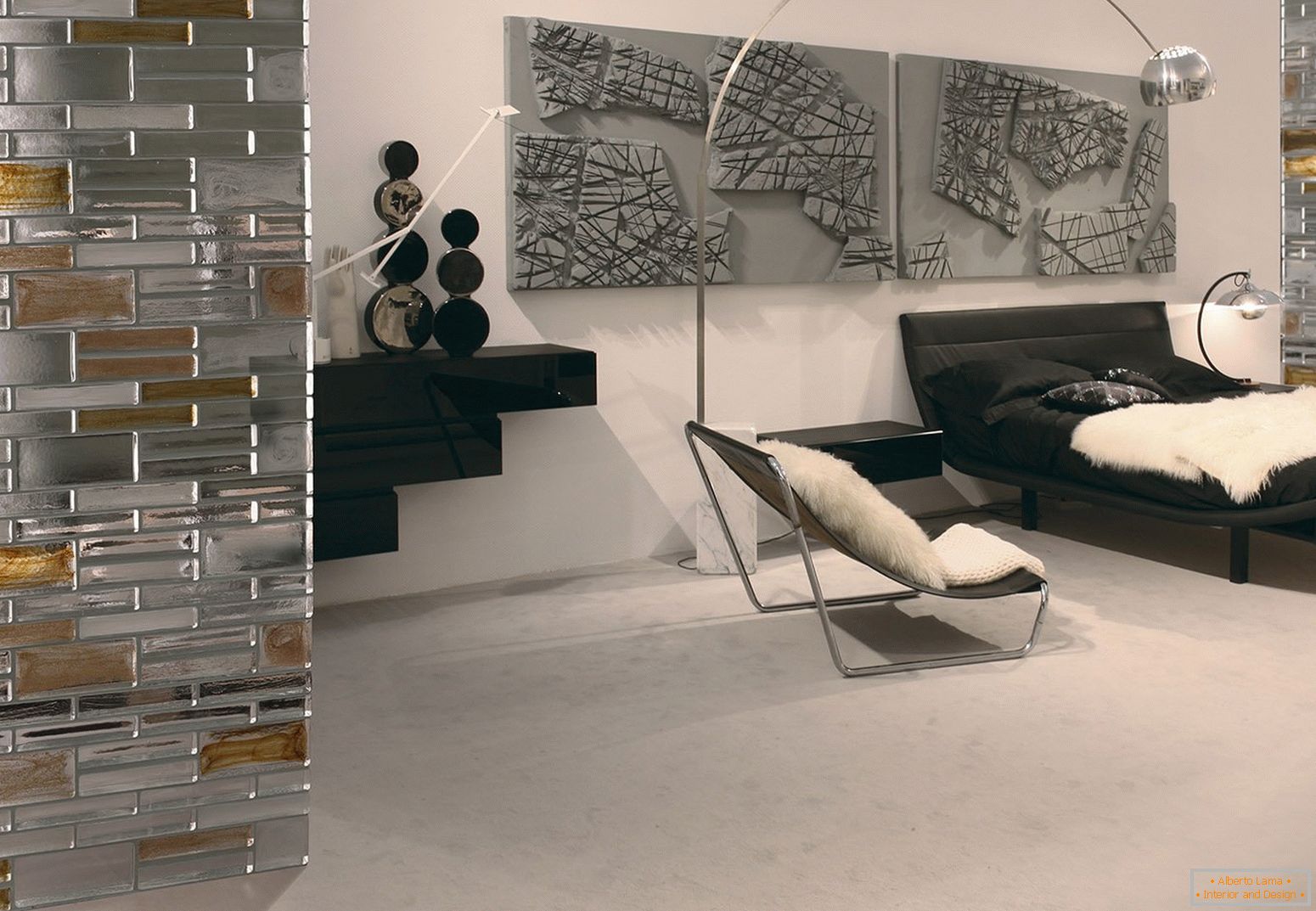
Features of the installation of glass blocks
A minimal set of tools and tools is required for the installation of a glass wall. There are three ways of stacking fragments:
- Wireframe. In this case, each module is placed inside a special "skeleton", which is pre-installed in the selected location. Fixation is carried out with the help of rubber inserts.
- On the solution. The process in many respects resembles the laying of bricks, but the glass blocks need only be slightly "adjusted" with a rubber hammer, and every three rows should be given at least a day for them to "grab".
- On the glue. To mount the wall in this way, you need a reinforcing mesh of galvanized steel or "stainless steel". Adhesive composition is usually sold complete with glass blocks. Dilute it in accordance with the instruction, which is also attached.

Glue is better to choose white color, seams from it will look more aesthetically. Remove the protective film from the fragments only after complete installation. Thus, the surface of the glass block will be protected from accidental scratches and damages. To increase the plasticity of the adhesive, add an ordinary PVA is not recommended.
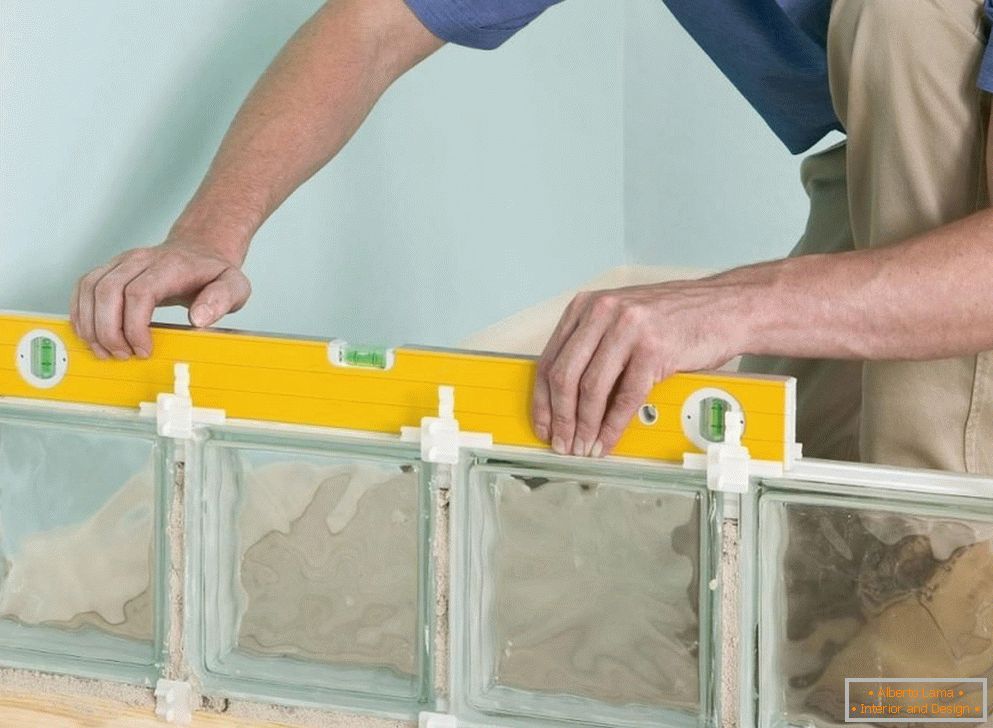
Glass was used in the design of interiors always. It gives the room a touch of airiness and lightness. Although still literally a couple of decades ago, the use of glass blocks in design tried to avoid because of too persistent associations with the typical "official" interiors of the Soviet era, now there is a triumphant return of this material. A huge selection of color palette and filling (up to tiny boats and miniature fruit compositions) reveals the high creative potential of the material. Therefore, glass blocks increasingly appear in the projects of venerable designers and are used in the stylish interiors of luxury apartments.

